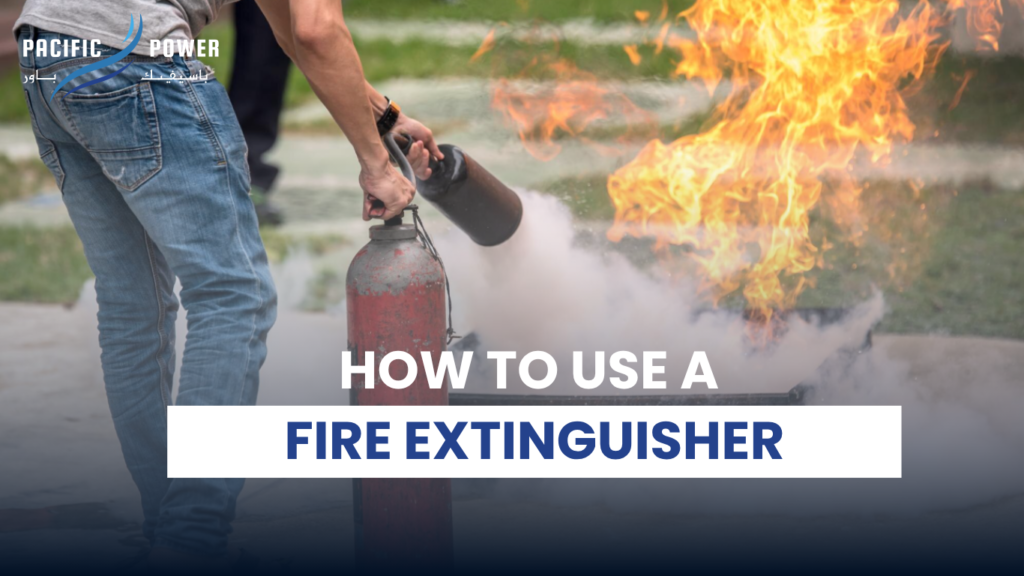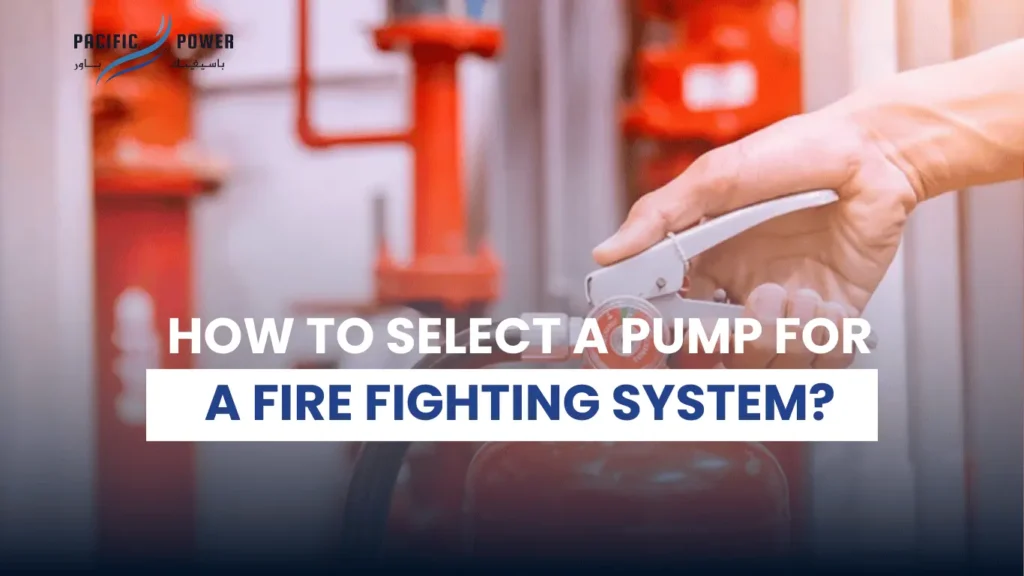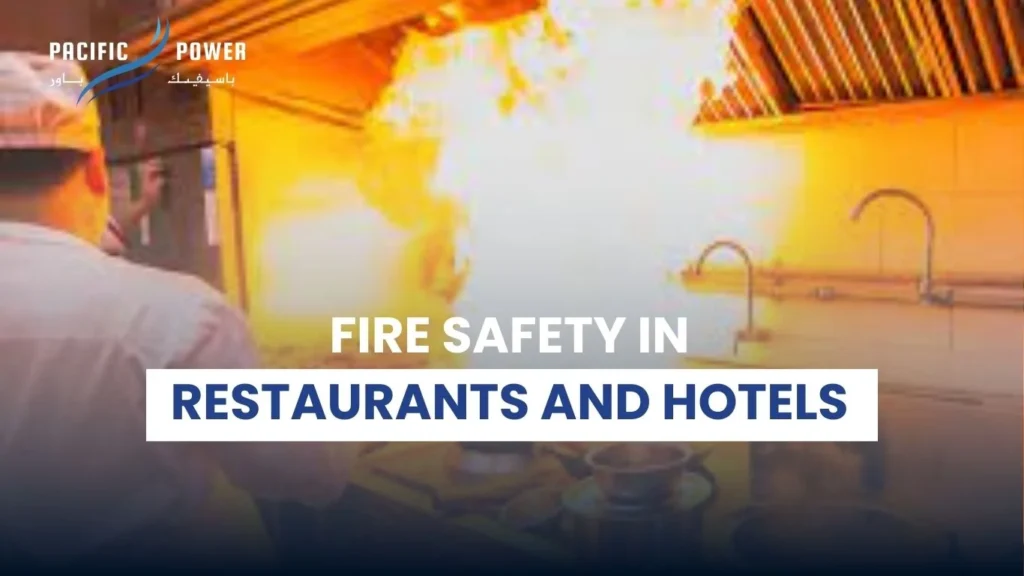
Table of Contents
How to Use a Fire Extinguisher
Fire emergencies can strike anytime and anywhere; at home, in the office, or at a commercial building. Knowing how to use a fire extinguisher effectively could be the difference between a small, manageable incident and a disastrous blaze. In this detailed guide, we will walk you through everything you need to know about fire extinguishers. How they work, the types of fires, the different kinds of extinguishers, and the step-by-step method to safely and confidently operate a fire extinguisher.
Whether you are a homeowner, employee, manager, or facility operator in Dubai or anywhere else, this guide will help you prepare for fire emergencies and keep you and those around you safe.
What Is a Fire Extinguisher?
A fire extinguisher is a portable device filled with an extinguishing agent designed to suppress fires. The agent could be water, foam, dry chemical powder, carbon dioxide (CO2), or wet chemicals, depending on the extinguisher type.
The extinguisher works by removing one or more of the elements needed for fire to burn — heat, oxygen, fuel, or chemical reactions.
Why Fire Extinguishers Matter
Fire extinguishers are the first line of defense against fires. They are designed to control or extinguish small fires before the situation escalates beyond control. In many commercial buildings and residential spaces across Dubai and the UAE, fire extinguishers are mandatory safety equipment, required by law under Civil Defence regulations.
While professional firefighters are trained to handle fires, they may not arrive immediately. Your prompt action using a fire extinguisher could save lives, protect property, and prevent costly damage.
Types of Fires
Before using a fire extinguisher, it’s crucial to understand the types of fires, because using the wrong extinguisher on a fire can make things worse. Fire classes are categorized based on the type of fuel burning:
- Class A Fires: Involve ordinary combustible materials like wood, paper, cloth, and plastics.
- Class B Fires: Involve flammable liquids like gasoline, oil, paint, and solvents.
- Class C Fires: Involve energized electrical equipment like computers, wiring, and appliances.
- Class D Fires: Involve combustible metals such as magnesium, titanium, and sodium (usually in industrial settings).
- Class K Fires: Involve cooking oils and fats, common in commercial kitchens.
Types of Fire Extinguishers and What They Are Used For
Each extinguisher is designed to combat specific fire classes:
- Water Extinguishers: Best for Class A fires. Never use on electrical or flammable liquid fires.
- Foam Extinguishers: Suitable for Class A and B fires. They cool the fire and create a barrier to prevent re-ignition.
- Dry Chemical Powder Extinguishers: Versatile, can be used on Class A, B, and C fires. This is the most common extinguisher.
- Carbon Dioxide (CO2) Extinguishers: Used for Class B and C fires. They displace oxygen to suffocate the fire and are clean (leave no residue).
- Wet Chemical Extinguishers: Designed for Class K fires, particularly cooking oil fires in kitchens. They cool and create a soapy foam to prevent re-ignition.
How to Identify the Right Fire Extinguisher for Your Space
In Dubai, Civil Defence requires that buildings have the right type and number of extinguishers based on the occupancy and fire risk assessment.
- Homes and offices: Usually fitted with dry chemical powder or CO2 extinguishers.
- Commercial kitchens: Must have wet chemical extinguishers for cooking oil fires.
- Workshops and industrial units: May require Class D extinguishers for metal fires or multiple types depending on the materials used.
Look for clear labeling on the extinguisher showing which fire classes it can be used on — this is critical to avoid misuse.
Fire Extinguisher Anatomy
Knowing the parts of an extinguisher helps you use it confidently:
- Safety Pin: Prevents accidental discharge; must be pulled before use.
- Handle/Lever: Squeeze to release the extinguishing agent.
- Nozzle or Hose: Directs the extinguishing agent at the fire.
- Pressure Gauge: Indicates whether the extinguisher is charged and ready.
- Label: Contains instructions and fire class info.
Step-by-Step Guide to Using a Fire Extinguisher: The P.A.S.S. Technique
Fire safety professionals worldwide teach the P.A.S.S. method, an easy way to remember how to operate a fire extinguisher:
- P – Pull the safety pin: This unlocks the operating lever and allows you to discharge the extinguisher.
- A – Aim the nozzle or hose: Point it at the base of the fire, not the flames. The base is where the fuel source is and where extinguishing is most effective.
- S – Squeeze the handle: This releases the extinguishing agent. Squeeze steadily and firmly.
- S – Sweep side to side: Move the nozzle in a sweeping motion from side to side, covering the base of the fire until it appears to be out.
Important Tips When Using a Fire Extinguisher
- Stand about 1.5 to 2 meters (5-6 feet) from the fire.
- If the fire re-ignites, repeat the P.A.S.S. steps.
- Do not turn your back on the fire; keep watching it while extinguishing.
- If the extinguisher empties and the fire is still burning, evacuate immediately.
- Never use water-based extinguishers on electrical or oil fires.
Fire Extinguisher Maintenance: Keeping Your Equipment Ready
Having a fire extinguisher is not enough — regular maintenance and inspection are essential:
- Monthly visual inspections: Check the pressure gauge, ensure the pin and tamper seal are intact, and the extinguisher is free of damage or corrosion.
- Annual professional servicing: A certified fire protection contractor should inspect and service extinguishers yearly to recharge or repair if needed.
- After use: Any discharged extinguisher must be refilled or replaced immediately.
How to Train Yourself and Your Team on Fire Extinguisher Use
Fire safety training boosts confidence and preparedness. Here’s how to conduct effective training:
- Schedule regular fire safety drills including extinguisher practice.
- Use training extinguishers or simulations for hands-on experience.
- Teach the P.A.S.S. technique clearly and emphasize safety first.
- Educate on different extinguisher types and which fires they are suitable for.
- Highlight evacuation procedures alongside extinguisher use.
What to Do After Using a Fire Extinguisher
After you have controlled a fire:
- Make sure the fire is completely out; monitor the area for any signs of re-ignition.
- Report the incident to your building management and fire department as required.
- Have the extinguisher refilled or replaced.
- Conduct an incident review to improve future response.
Fire Extinguishers and Dubai Civil Defence Regulations
Dubai Civil Defence enforces strict rules on fire safety, including fire extinguisher placement, types, and maintenance in all buildings.
- Fire extinguishers must be installed at key locations like exits, kitchens, electrical rooms, and near flammable material storage.
- Extinguishers must have valid certification and regular maintenance reports.
- Building managers must keep records of inspections and maintenance.
Non-compliance can result in fines, business closure, or worse — increased risk to life and property.
Common Mistakes to Avoid When Using a Fire Extinguisher
- Trying to fight a fire without an exit path.
- Using the wrong extinguisher for the fire type.
- Failing to pull the safety pin before squeezing the handle.
- Aiming at the flames instead of the base.
- Not evacuating promptly if the fire grows.
Fire Extinguishers is Your Fire Safety Plan
Fire extinguishers alone don’t guarantee safety, they are part of a comprehensive fire safety strategy including alarms, sprinklers, emergency exits, and trained personnel.
Regular training, maintenance, and knowing when and how to use extinguishers keep everyone safe.
Conclusion
Fire emergencies are frightening, but preparation can make a huge difference. Learning how to use a fire extinguisher is an empowering skill that everyone should have. It protects lives, reduces damage, and gives you confidence to act swiftly and correctly when seconds count.
Remember:
- Always identify the fire type.
- Use the correct extinguisher.
- Follow the P.A.S.S. method.
- Keep a safe exit route.
- Maintain and inspect extinguishers regularly.
- Train yourself and others.
For comprehensive fire safety solutions, extinguisher servicing, and training in Dubai, trust professional fire contractors like Pacific Power UAE. Together, we can build safer communities prepared for any fire emergency.

